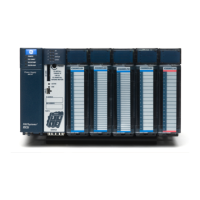Chapter 9. Diagnostics
384 PACSystems* RX7i, RX3i and RSTi-EP CPU Programmer's Reference Manual GFK-2950C
9.1 Fault Handling Overview
The PACSystems CPU detects three classes of faults:
Internal Failures (Hardware)
Non-responding modules
Failed battery
Failed Energy Pack (CPE302/CPE305/CPE310/CPE330
models)
Memory checksum errors
External I/O Failures (Hardware)
Loss of rack or module
Addition of rack or module
Loss of Genius I/O block
Communication failures
Configuration failures
Password access failures
9.1.1 System Response to Faults
Hardware failures require that either the system be shut down or the failure be tolerated. I/O failures
may be tolerated by the control system, but they may be intolerable by the application or the
process being controlled. Operational failures are normally tolerated.
Faults have three attributes:
I/O Fault Table
Controller Fault Table
Fatal
Diagnostic
Informational
Configurable
Non-configurable
9.1.2 Fault Tables
The PACSystems CPU maintains two fault tables, the Controller Fault Table for internal CPU faults
and the I/O Fault Table for faults generated by I/O devices (including I/O controllers). For more
information, refer to Using the Fault Tables below.

